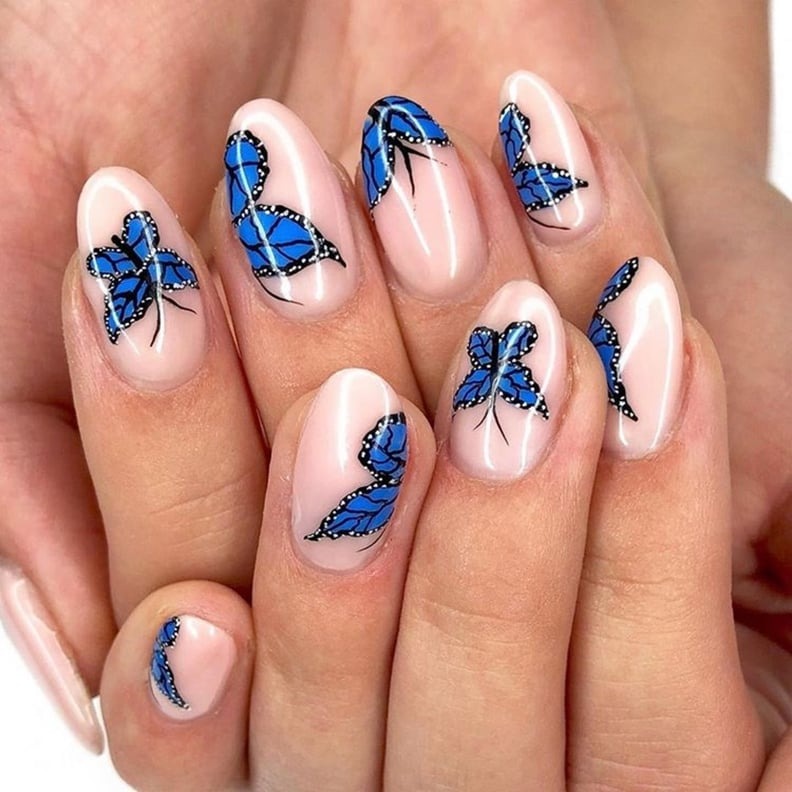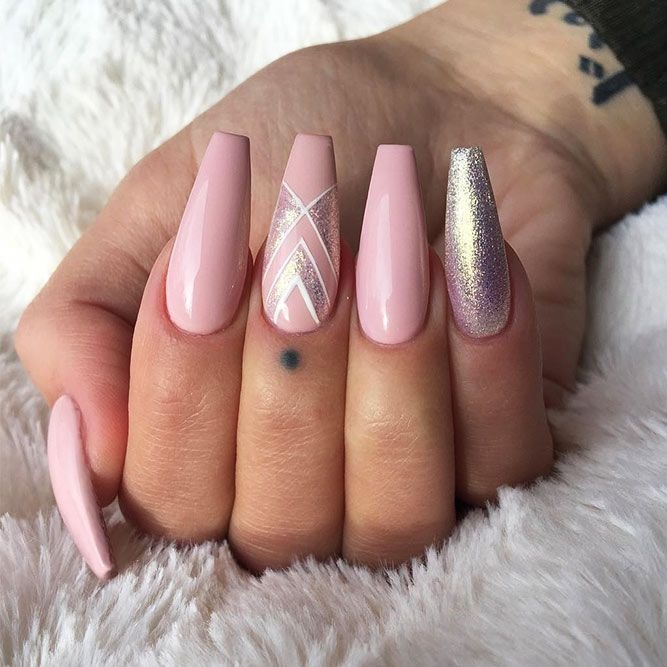Nail art is a vibrant and expressive form of self-expression that allows individuals to showcase their creativity on their fingertips. Many people wonder how to practice nail art effectively to refine their skills and improve their techniques. In this guide, we will explore essential tips on how to practice nail art, divided into six comprehensive points, ensuring that both beginners and seasoned nail artists can find useful insights.
Invest in Quality Nail Art Tools
To excel in nail art, having the right tools is crucial. Quality tools not only make the process easier but also enhance the final appearance of your nail art. Investing in superior nail art tools can drastically improve your skills and the outcomes of your designs. Here are some essential tools and their impact on your nail art journey.
The Impact of Art Brushes
Art brushes play a major role in the precision and intricacy of nail art designs. Different brushes serve various purposes; detailed brushes allow for fine lines and intricate patterns, while broader brushes are perfect for filling in colors or creating gradients. Opt for high-quality brushes that don’t shed bristles and maintain their shape after repeated use. This ensures your designs remain precise and professional.
The Importance of Dotting Tools and Gel Paint
Dotting tools and gel paint are indispensable for creating diverse nail art. Dotting tools help produce perfect dots and patterns, essential for numerous designs. Meanwhile, high-quality gel paint provides vibrant colors and a smooth application, crucial for achieving professional-grade art. Invest in gels that offer good opacity and longevity to ensure your designs stand out and last longer.
Practice Makes Perfect

Practicing nail art is key to refining your skills and developing confidence. Regular practice allows for experimentation and growth, leading to more consistent and professional results in your nail designs.
Using Nail Tip Stands for Practice
Nail tip stands provide a stable platform for practicing nail art designs. They’re convenient, easy to use, and an ideal alternative when a live model isn’t available. Simply attach the nail tips using double-sided tape or adhesive putty and start practicing. This tool helps mimic the experience of working on actual nails, making it a valuable asset in your practice routine.
Nail Swatch Sticks and Live Models
Nail swatch sticks are another great tool for practice. They offer a quick and efficient way to test designs, colors, and techniques. When possible, practicing on live models is also beneficial. It provides experience with different nail shapes and sizes and builds your comfort level in working with clients. Remember, the goal is to replicate the professional setting as closely as possible.
The Role of Time Management in Practice
Effective practice also involves good time management. Set aside dedicated time for practicing your nail art without interruptions. This ensures focused and productive sessions. Also, be mindful of the time it takes to complete a design. Practicing under time constraints can help you work efficiently and manage client expectations in a real-world scenario. Aim for a balance between perfection and timeliness to provide the best service to your clients.
Pre-Designing Your Nail Art
Pre-designing your nail art is key to achieving flawless results. It helps in visualizing the final outcome and adjusting details beforehand. This process involves several crucial steps.
Drawing Designs First with Pencils
Start by sketching your nail art designs with pencils. This technique is excellent for beginners. It allows you to make corrections easily. You waste less product this way. Also, drawing first gives you the confidence when you start painting.
Planning Designs on Paper
For more complex designs, use paper. Trace the nail shape or use a nail stencil. Sketch your design on this outline. This helps see how it fits on an actual nail. Adjust the scale and details as needed before moving to the actual nail.
Scaling Down Large Images
If you plan to replicate a large image on a nail, start big. Gradually draw it smaller until it fits a nail’s size. This practice boosts your skill in maintaining details in miniaturized forms. It ensures the design remains recognizable even when scaled down.
Exploring Different Art Mediums

The right art medium can make nail art more fun and manageable. Different materials offer various benefits for artists at all skill levels. Let’s explore some mediums and how they can improve your nail art practice.
Benefits of Acrylic Paint
Acrylic paint stands out as a top choice for nail artists. It dries quickly, which means less wait time between layers. It’s also water-soluble, making it easy to thin out for delicate work or clean up mistakes. And since it’s flexible, it moves with the nail, reducing the chance of cracks. Using acrylic paint can give you the freedom to create detailed and vibrant designs with ease.
Trying Out Various Gel Paint Brands
There’s a wide array of gel paint brands available. What works for one artist may not work for another. It’s important to test different brands to find the one that suits your style. Some gels have a thicker consistency, perfect for bold lines and shapes. Others are thinner, better for intricate patterns. Look for gels that offer high pigmentation and smooth application for stunning results.
Utilizing Watercolor Paints and Nail Art Pens
Watercolor paints are another tool to consider. They offer a lighter touch for creating soft, gradient effects. They work well for blending colors seamlessly on the nail. Nail art pens, on the other hand, provide control and precision. They’re great for writing or adding fine lines without the hassle of a brush. If you want to add details that pop, these pens can be an amazing asset to your toolkit.
Techniques for Creating Nail Art
Enhancing your nail art skills involves mastering various techniques. Whether you are a beginner or an expert, understanding the process of layering, curing, and color blending can take your designs to the next level. Let’s delve into a few essential techniques for creating stunning nail art.
Working in Layers and Curing
Working in layers is key for detailed designs. Start with a base layer and cure it. Add details gradually, curing after each step. This avoids smudging and keeps designs sharp. Quick curing locks in detail, so mistakes don’t ruin your work.
Blending Colors for Natural Shadows
For lifelike art, learn to blend colors. Apply a base color, then add a shadow shade. Gently blend where they meet. This creates a smooth transition, or ‘ombre’ effect, for natural-looking shadows. Practice blending different colors to see which work best together.
Using Base Gels for Translucent Effects
Translucent effects make designs pop. Mix a little color gel with clear base gel for this look. This slightly diluted color blends softly into the background, perfect for adding depth and intricacy to your nail art.
Learning from Tutorials
Tutorials are a goldmine for advancing your nail art skills. They unlock creativity and present new techniques.
Finding Inspiration on YouTube, Instagram, and Pinterest
Explore YouTube, Instagram, and Pinterest for endless nail art ideas. These platforms feature countless tutorials from skilled artists. Discover various styles and methods, then experiment with them on your nail designs. YouTube offers step-by-step visuals, Instagram showcases trends, and Pinterest provides a broad collection of creative concepts.
The Importance of Persistence and Repetition
Mastering nail art requires patience and repeated practice. Watch tutorials multiple times and recreate the designs yourself. Each attempt helps improve your skill. Don’t get discouraged by initial failures; every mistake is a lesson. With time and repetition, your nail art will grow in complexity and beauty.
Alternative Nail Art Methods

Exploring different techniques can revitalize your nail art practices. Let’s cover some alternative methods that are not only popular but also effective for creating stunning designs.
Using Foils, Water Decals, and Stamping Tools
Using foils in nail art offers a shiny, metallic finish that’s hard to achieve with paint. Water decals provide detailed patterns that are easy to apply, perfect for intricate designs without the fuss. Stamping tools allow for consistent, precise patterns, making them ideal for beginners and those under time constraints.
Experimenting with Marbling and Blooming Gel
Marbling gel lets you create swirls of mixed colors that mimic natural marble. This method is relatively easy but gives a sophisticated look. Blooming gel, on the other hand, spreads out when applied, creating watercolor or blossoming effects. These gels are excellent for adding unique and eye-catching visuals to any nail design.
Building Confidence in Your Art
Confidence is key in mastering nail art. It drives your creativity and skill forward.
Avoiding Negative Self-Comparison
Stop comparing your work to others. It can hurt your progress. Instead, focus on how far you’ve come. Celebrate your own unique style. Remember, comparing often overlooks the effort behind others’ success. Stay positive and keep your journey in mind.
Embracing Individuality and Continuous Improvement
Your nail art is unique, just like you. Embrace this fact. Every design you create won’t look like anyone else’s—and that’s good. Challenge yourself with new techniques, but be patient. Progress takes practice. With each nail you paint, you grow more skilled. Enjoy every step of learning how to practice nail art.